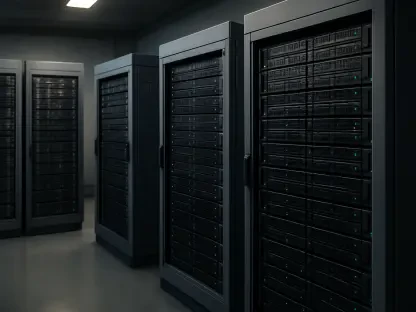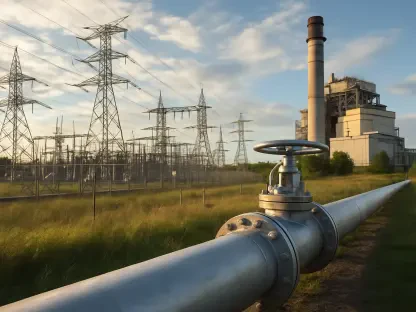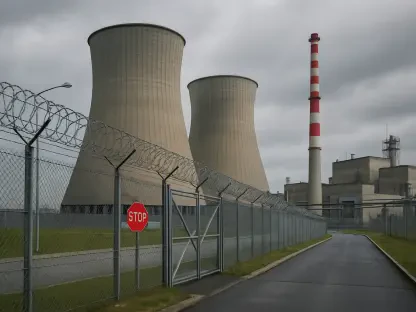With Texas’s electricity demand projected to grow by 8% annually over the next decade due to booming industries such as oil and gas, data centers, and artificial intelligence, the state faces a significant challenge in meeting its future energy needs. A recent report by the Public Utility Commission of Texas has proposed an innovative solution: the development and deployment of advanced nuclear reactors (ANRs). The report suggests that Texas has the potential to become a global leader in advanced nuclear energy, but achieving this goal will require a series of regulatory reforms, streamlined siting processes, and substantial state financial support.
Regulatory and Bureaucratic Framework
Establishment of a Texas Advanced Nuclear Energy Authority
The report outlines seven major recommendations for state lawmakers, beginning with the creation of a Texas Advanced Nuclear Energy Authority. This new entity would play a crucial role in the administration of funds for nuclear projects and the facilitation of bureaucratic processes for companies aiming to establish advanced reactors in Texas. Alongside the authority, the appointment of a nuclear permitting officer within an existing state agency is advised to accelerate the approval and implementation of these projects. By centralizing regulatory functions and streamlining procedures, Texas could significantly reduce the time and cost associated with bringing advanced nuclear reactors online.
In addition to the Texas Advanced Nuclear Energy Authority, the report recommends the formation of a Texas Nuclear Energy Fund, modeled after the successful Texas Energy Fund. The existing fund has already provided low-interest loans for natural gas-fired generation projects, demonstrating its effectiveness in promoting energy infrastructure development. By adopting a similar financial model for advanced nuclear reactors, Texas could incentivize private investment and ensure that new nuclear projects are financially viable. The ultimate goal would be to have advanced reactors operational by 2035.
However, the introduction of these entities and funds would be only the first step. Ensuring their effective operation would require continuous collaboration with local, state, and federal agencies. This collaborative approach would aim to harmonize regulatory standards and create a conducive environment for the nuclear industry’s growth. Properly managed, these steps would lay the foundation for Texas to emerge as a leader in the advanced nuclear energy sector.
Addressing Regulatory, Construction, and Manufacturing Challenges
Despite the promising outlook, the report highlights the significant regulatory, construction, and manufacturing barriers that must be addressed to make ANR projects commercially viable. These challenges range from stringent safety standards and lengthy approval processes to the high costs and technical complexities associated with building and maintaining advanced reactors. To overcome these obstacles, the report suggests implementing a robust framework that prioritizes efficiency and innovation in project development.
For instance, the Texas Advanced Nuclear Energy Authority could work on developing specialized programs to support research and development in advanced nuclear technologies. By partnering with academic institutions and industry experts, the authority could foster innovation and reduce the technological and financial risks associated with ANR projects. Additionally, streamlined permitting processes and regulatory incentives could attract more companies to invest in Texas’s nuclear sector.
Simultaneously, the state could focus on building a resilient supply chain and manufacturing ecosystem to support advanced nuclear projects. Establishing the Texas Advanced Manufacturing Institute, as recommended by the report, would be a significant step in this direction. This institute could serve as a hub for coordinating research, development, and production activities, ensuring that Texas has the necessary resources and capabilities to support ANR projects. Addressing these regulatory and operational challenges is vital to positioning Texas as a competitive player in the global nuclear energy market.
Workforce Development and Public Outreach
Workforce Development Programs
Another critical aspect of the report’s recommendations is the development of a workforce development program to align educational institutions with industry needs. As advanced nuclear reactors require a highly skilled workforce, Texas must invest in training programs that equip students and professionals with the necessary knowledge and expertise. By collaborating with universities, technical schools, and industry partners, the state could create a pipeline of qualified workers ready to take on roles in the burgeoning nuclear sector.
For instance, educational institutions could offer specialized courses in nuclear engineering, safety protocols, and advanced reactor technologies. These programs would not only provide theoretical knowledge but also offer practical experience through internships and apprenticeships with leading nuclear companies. Moreover, the state could offer scholarships and grants to encourage students to pursue careers in nuclear energy, thereby addressing the potential skill shortages in this high-demand field.
In addition to formal education, the report emphasizes the importance of continuous professional development for existing workers. By offering workshops, certifications, and advanced training programs, Texas could ensure its workforce remains at the forefront of technological advancements in the nuclear industry. This comprehensive approach to workforce development would be instrumental in meeting the growing demand for skilled labor in the advanced nuclear reactor sector.
Public Outreach and Community Engagement
Public outreach is another vital component of the report’s recommendations. Deploying advanced nuclear reactors in Texas would require significant public support and understanding of the benefits and safety measures associated with nuclear energy. To this end, the report suggests launching a statewide public outreach program to educate residents about advanced nuclear power. This program would aim to address common misconceptions, highlight the environmental and economic benefits of nuclear energy, and reassure the public about safety protocols.
The outreach program could include a variety of initiatives, such as community meetings, educational campaigns in schools, and partnerships with local media to disseminate information. Engaging with communities directly would provide a platform for addressing concerns, answering questions, and gathering feedback. By fostering open dialogue, the state could build trust and support for advanced nuclear projects.
Furthermore, the report underscores the importance of transparency and accountability in public communication. Regular updates on project developments, safety measures, and environmental impact assessments would help maintain public confidence. By proactively addressing concerns and demonstrating commitment to safety and sustainability, Texas could garner widespread support for its advanced nuclear initiatives.
Financial Support and Investment Attraction
Establishing Grant and Cost-Sharing Programs
To financially support the early development and siting of advanced nuclear reactors, the report recommends creating a direct grant cost-sharing program. This program would provide financial assistance to companies in the initial stages of their ANR projects, covering a portion of their development costs. By alleviating some of the financial burdens, Texas could encourage more companies to invest in advanced nuclear technologies and expedite the deployment of ANRs.
The cost-sharing program could be designed to offer matching grants, where the state matches the funds invested by private companies. This approach would not only reduce the financial risk for companies but also ensure that public funds are used efficiently. Additionally, the program could prioritize projects that demonstrate significant potential for innovation, safety, and environmental benefits. By strategically allocating resources, Texas could maximize the impact of its financial support and drive the growth of the advanced nuclear sector.
Creating an Investor-Friendly Environment
To attract investment, Texas must create an investor-friendly environment that promotes confidence in the advanced nuclear sector. This includes implementing favorable policies, providing tax incentives, and ensuring regulatory stability. By lowering barriers to entry and offering a predictable business climate, Texas can attract both domestic and international investors to fund advanced nuclear projects. Encouraging public-private partnerships and fostering collaboration with leading nuclear firms globally can further bolster investment in the sector.
By adopting these measures, Texas could not only meet its growing energy demands but also position itself at the forefront of advanced nuclear energy on a global scale, ensuring energy security and promoting technological innovation within the state.









